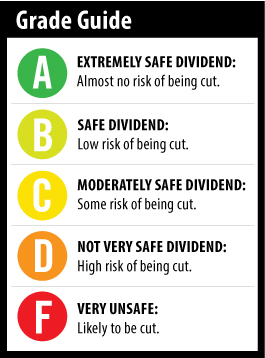 Without a doubt, the most requested stock for the Safety Net each week is Prospect Capital Corp. (Nasdaq: PSEC).
Without a doubt, the most requested stock for the Safety Net each week is Prospect Capital Corp. (Nasdaq: PSEC).
I covered the stock six months ago, but since so many people want an update, let’s see if anything has changed.
Prospect Capital is a business development company (BDC). BDCs fund other businesses either with equity investments or loans.
Because BDCs typically collect high interest rates on the loans they make and must pay out 90% of their income in the form of dividends, they offer shareholders higher yields than most companies.
So far in 2014, Prospect Capital has made $2 billion in loans.
[ad#Google Adsense 336×280-IA]Its latest, announced Monday, was an $86.1 million loan to Onyx Payments, which is the largest processor of payments to hotels.
Prospect Capital is popular because of its 12.8% annual dividend yield, which is paid monthly.
When I looked at the company in April, I mentioned that in 2013 and through the first two fiscal quarters of 2014 (its fiscal year ends in June), the company did not generate enough net investment income to cover the dividend.
However, Prospect Capital had just raised $300 million that it was going to put to work, which should lift net investment income higher.
For the full fiscal year, the company’s net interest income was $1.19 per share, while it paid out $1.32 in dividends.
Rising Dividend
Prospect Capital has raised the dividend for 55 consecutive months, though usually by fractions of a penny each month. The September dividend was $0.110525, increasing to $0.110550 in October. The company continued to raise the dividend by $0.000025 per month so that the recently declared January dividend will be $0.110625.
The company claims that in the near term, it can continue to sustain the dividend with net interest income and a prepaid tax asset. In other words, the company prepaid some taxes. Now, it will not have to pay them, even though it shows up as a tax expense. So it can use the funds it is not paying in taxes to pay the dividend.
 This is not the optimal way of paying dividends, but management has made it clear that paying the dividend is a priority in the near term.
This is not the optimal way of paying dividends, but management has made it clear that paying the dividend is a priority in the near term.
Longer term, however, we need to start seeing some evidence that the company’s net interest income will be high enough to sustain the dividend.
In the short term, I don’t expect to see a problem paying and even continuing to raise the dividend by a fraction of a penny. Intermediate term, I want to see net interest income at least as high as the dividend and preferably higher.
A dividend cut is not likely, but it’s no longer the slam dunk it once was.
Dividend Safety Rating: B
— Marc Lichtenfeld
[ad#DTA-10%]
Source: Wealthy Retirement
